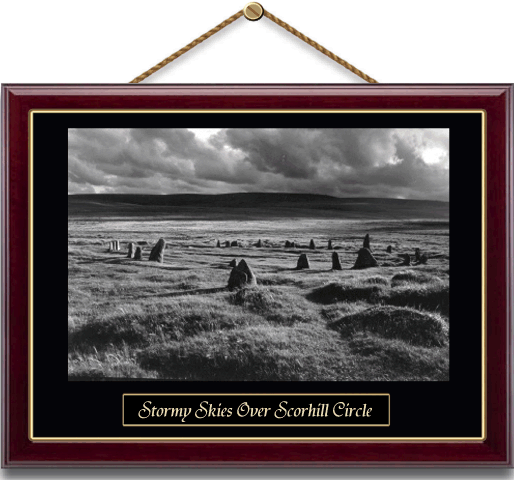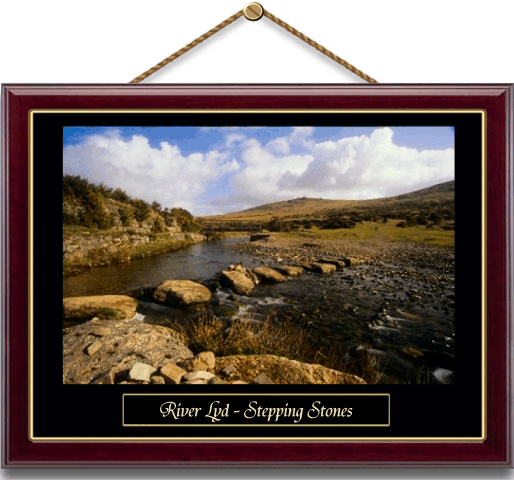
People get introduced to Dartmoor in many ways, I along with many others first ventured onto its rocky heights in search of letterboxes. At first this tends to be the consuming passion but gradually that broadens out to encompass the many features and moods of the moorland landscape which then evolves into differing fields of interest.
Jenny Bryant began walking Dartmoor in the early 1980s and it was letterboxing that brought her and her family out into the wilds in search of what at that time were the elusive boxes. Their first boxing expedition was up on Great Links Tor which provided them with 2 ‘chance finds’ letterboxes which were the catalyst for many future visits to Dartmoor. Once her two sons had grown up she continued her interest in letterboxing only now she was walking the moor on her own. There can be no doubt that this is by far the best way to appreciate the beauty of the moor as there are no distractions apart from those that Mother Nature provides. Then in 2001 the dreaded Foot and Mouth disease effectively closed the moor to everybody and like many regular Dartmoor walkers once it reopened things never felt the same. Once Jenny resumed her moorland rambles she found that whilst the landscape still held its attractions letterboxing had lost its appeal. However, during her previous walks she had always carried a small compact camera with which she took numerous photographs along the way. Jenny will freely admit that she was never completely happy with with those photographs and it was this that led to her attending evening classes in photography. Not only did these classes improve her photographic skills they also taught Jenny how to process and print her own works in the black and white medium. To this day she can still recall her very first print:
‘The first image that I printed myself in the darkroom was a tree growing out of the wall at Scorhill. I shall never forget watching that image appear on a blank piece of paper.’
Over time Jenny’s interest in photography grew into something of an obsession and soon her dark room was in constant use. In the early days most of her landscape work was done in black and white although now she does work in colour. All of Jenny’s black and white works are processed and hand printed in her own wet darkroom. Today she produces both cards and prints of her work. the cards are printed on resin coated paper and the prints on fibre based paper. Both are then given a selenium bath which helps to keep them archivally safe. Here colour works are made up of prints taken from transparencies which are then processed at a reputable laboratory.
It is always interesting to see what kind of equipment and techniques they any artists uses and in Jenny’s case she explains:
‘The camera that I mainly use is a Nikon F80. I carry two bodies, one loaded with colour transparency film (usually Fuji Velvia 50, until I have used up my supply) and the other with a black and white film, (Ilford Delta 100, 400 and HP5). I have lenses of 18 – 35mm, 28 – 80mm and 70 – 300mm. I use a polariser most of the time and a red or orange filter for my black and white work. I use a tripod 99% of the time. In the darkroom I have a Durst M605 enlarger and use mainly Ilford paper, both resin coated and fibre based. Mounted prints are dry mounted to prevent them from lifting and going wavy. They are mounted in plain off-white mountboard.’
In Jenny’s opinion the best Dartmoor images can be found at dawn and dusk when the landscape is painted with colours and hues that cannot be seen during the hours of daylight. She also considers that during wintertime the low sun can give some stunning enhancements to any moorland aspect as can the early evening light. When asked, “what inspiration do you get from Dartmoor?”, Jenny replied:
‘I love Dartmoor and if we ever go on holiday I am always glad to get back on the Moor, there is nowhere like it. There is inspiration all around, especially if you work in black & white, the textures, shapes and skies. I love to be out on my own in the silence just meeting people and having a chat before we go on our seperate ways. I love to be in places where the great rivers rise and to wonder how these small trickles of water become big rivers. I am increasingly looking for more emotional images with stormy skies or misty conditions.’
The hardest question to ask any lover of Dartmoor is, “where is your favourite spot on the moor and why?”. This is akin to taking a small child into a sweet shop and asking them to pick one sort of treat when there are hundreds to choose from. However, in Jenny’s case here reply was:
‘I think my favourite part of the Moor is the North Moor. It is more remote and wilder than the South. the South is lovely but seems to be softer. Too many walkers and cyclists. On the North Moor you can leave everything behind. I love the West Okement Valley, I also love to sit on the top of Steeperton and look down the length of Taw Plain through to North Devon. The Belstone Ridge, Fur Tor. I enjoy the Staple Tor ridge for its photographic potential – I think Great Staple is the best shaped tor on the Moor. I think Haytor is great but can’t stand being there with masses of other people. I just go at dawn or dusk when the coaches are not there. I just love it all really! Can’t bear to think of the day when I can’t get up there.’
Below are but two examples of Jenny’s work and as you can see both portray her expertise in capturing the wildness and beauty of the Dartmoor landscape.

© Jenny Bryant 2009

© Jenny Bryant 2009
Over the years I have seen many photographic exhibitions at which photographers try to capture the spirit and moods of Dartmoor. Whilst it is true that some photographers have indeed managed to portray the moor in all its moods there is usually one thing that lets them down. Admittedly I am no expert on photography but I know what I like and I know Dartmoor and in my opinion nobody can possibly capture the true grandeur of the place by wandering around a roadside tor. To find the true genius loci you need to get out into the heart of the landscape in all weathers and at all times and that involves walking. It is this aspect that truly sets Jenny’s work apart for she has clearly trekked many miles in various weather conditions in search of the real Dartmoor which is only to be found in the less accessible parts of the moor. This linked with her photographical expertise and keen eye for the perfect shot has produced a fine portfolio of work which portrays an intimate knowledge and love of the moor.
If you are interested in Jenny’s work then visit her website from the link at the top of the page or even better if you are anywhere near Tavistock on a Wednesday then she can often be found at her stall in the Pannier Market. Alternatively she recently has had a book published which contains colour photographs of Devon, its called, ‘Perfect Devon’ and is published by Halsgrove (ISBN – 10: 1841147141/ISBN – 13: 978-1841147147).
 Legendary Dartmoor The many aspects past and present of Dartmoor
Legendary Dartmoor The many aspects past and present of Dartmoor
